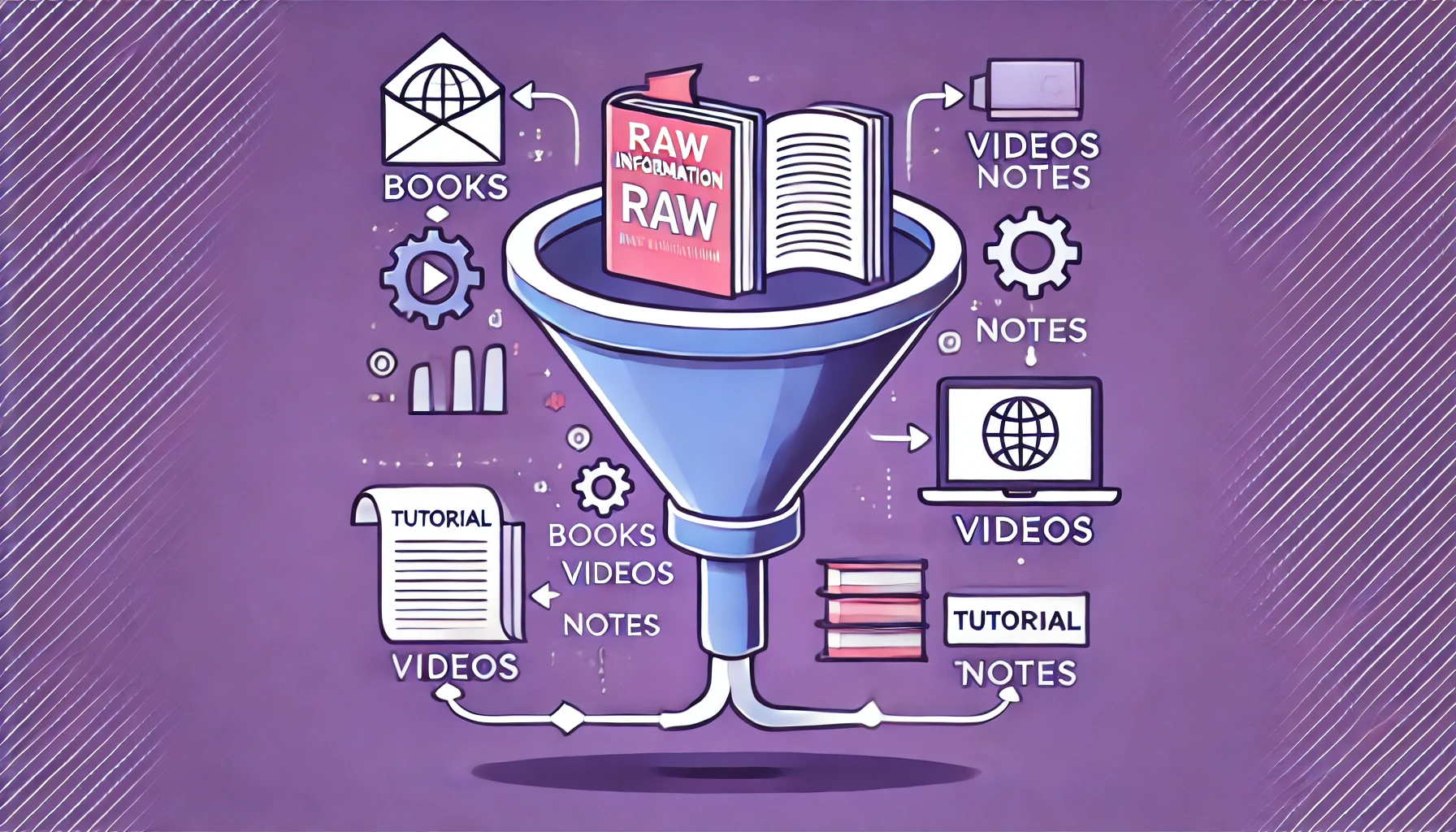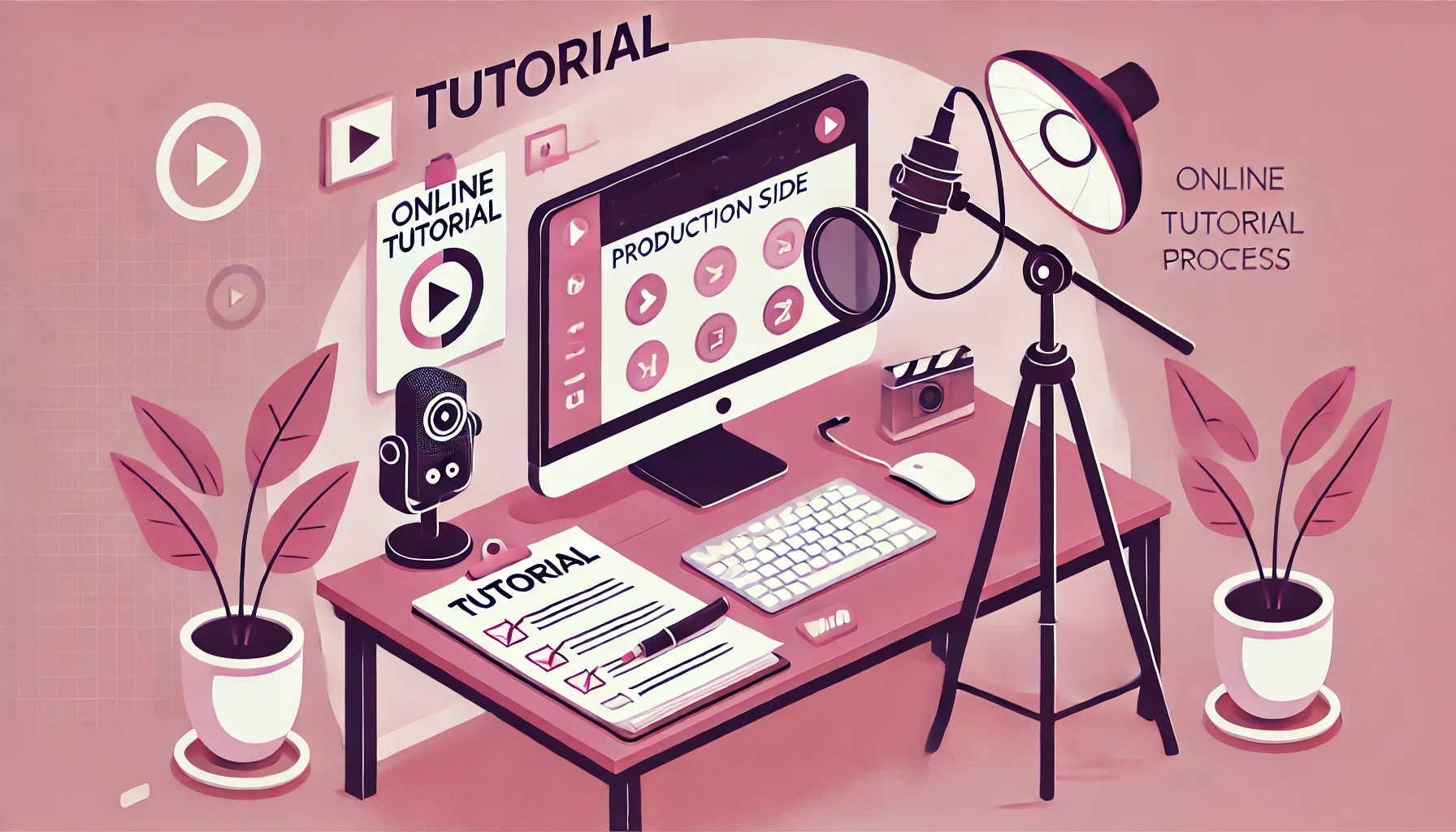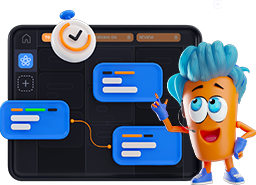
Click the button to start reading
The Anatomy of a Great Online Tutorial: A Deep Dive into Winning Examples
There’s something uniquely inspiring about learning through a well-constructed online tutorial.
You feel that “aha” moment as everything clicks into place, and suddenly you can do something new—whether it’s cooking a complex dish, coding your first program, or perfectly executing a yoga pose.
An outstanding tutorial is like a friendly mentor: guiding you step by step, making you feel confident, and delivering consistent value in a manageable format.
This post explores what makes a truly outstanding online tutorial by analyzing success stories from popular platforms like YouTube, Udemy, and blogs.
Along the way, you’ll find actionable insights to help you create, refine, or even monetize your own tutorials, so you can pass on that “aha” moment to your audience.

Why Great Tutorials Matter
In a world where information swirls around in endless streams of content, a tutorial must do more than just instruct.
It needs to stand out as a clear, accessible pathway through the noise, showing learners how to solve a specific problem or master a new skill.
When your tutorial delivers an immediate win—like teaching someone to bake a delicious sourdough loaf, set up a marketing automation funnel, or maintain perfect posture in yoga—you’re not just offering information.
You’re transforming confusion into confidence. And that sparks loyalty, word-of-mouth promotion, and a dedicated following eager for more of what you have to offer.
Core Elements of High-Quality Tutorials
If you examine the best examples of online tutorials, you’ll notice common threads. No matter the platform—YouTube, Udemy, or a standalone blog—these exemplary tutorials share essential qualities:
- Clarity: They break down complex tasks into accessible steps, with language that’s easy to follow.
- Structure: A logical flow allows learners to build on what they’ve previously mastered.
- Engagement: Strong hooks, interesting storytelling, and interactive elements ensure that learners stay attentive.
- Practical Value: They solve a real problem or teach a useful skill that learners can apply immediately.
- Credibility: They show expertise through well-researched content, reliable references, and consistent quality.
When these elements converge, you’ll see loyal audiences who trust the teacher’s guidance and return for more.

Platform Highlights: YouTube, Udemy, and Blogs
Each major tutorial platform offers unique opportunities and faces distinct challenges. Understanding these nuances can help you tailor your tutorial content for maximum effect.
YouTube
YouTube is synonymous with video-based learning. Many outstanding channels employ strategies like:
- Quick Intros: You have only a few seconds to grab attention, so starting with a compelling hook or an immediate taste of the end result works wonders.
- Visual Demonstrations: Clear footage, effective camera angles, and minimal background noise make it easy for viewers to follow each step.
- Concise Explanations: YouTube users often look for concise guidance. The best tutorials cut fluff, focusing on what’s most essential.
- Chapters and Time Stamps: Navigation becomes easier when viewers can jump directly to sections of interest.
Udemy
Udemy stands out for more in-depth, course-based tutorials. The platform’s top-rated offerings usually feature:
- Structured Curriculum: Lessons are grouped in modules that build on each other, promoting progressive skill acquisition.
- Quizzes and Assignments: Interactive tasks help learners test their understanding and stay engaged.
- Liveliness: Even if lectures run longer, combining slides, on-screen demonstrations, and real-world examples can help maintain momentum.
- Community Interaction: Great instructors encourage Q&A and integrate learner feedback to refine content.
Blogs
Blogs might seem less glamorous compared to the high-octane energy of videos, but they continue to be a power tool for tutorials. Exceptional blog tutorials often exhibit:
- Keyword Optimization: By structuring headings, subheadings, and content around relevant search terms, great blog tutorials get discovered more easily.
- Media Integration: Screenshots, infographics, and GIFs help illustrate points, ensuring that text-based instructions don’t feel dry.
- Downloadable Resources: Checklists, templates, or reference PDFs encourage learners to stay engaged and revisit the material.
- Step-by-Step Layout: Numbered steps, bulleted lists, and consistent formatting create a logical narrative for easy following.

Step-by-Step Insights: Breaking Down Real Examples
Let’s dig deeper by looking at a few hypothetical yet representative tutorials you might encounter across platforms. These examples reveal patterns that consistently drive tutorial success:
- YouTube: The Perfect Pancake Tutorial
Imagine a channel dedicated to culinary basics. The video opens with a mouthwatering shot of a stack of golden-brown pancakes topped with fresh berries. Within 10 seconds, viewers see the end result and instantly want to replicate it. Then, the host quickly transitions to ingredient prep, demonstrating every measurement with on-screen text. Visual cues, such as color-coded measuring cups, prevent confusion. By the end, you’ve watched the entire pancake-making process unfold, from mixing batter to flipping perfection. - Udemy: Mastering Basic Web Development
A well-designed online course for beginners might start with a short introduction of basic HTML structure, followed by mini-assignments so that new coders apply what they’ve just learned. Progress tracking features let learners see which lessons they’ve completed. The modules gradually move onto CSS styling, culminating in a capstone project where learners create their own responsive webpage. Regular knowledge checks reinforce essential concepts every step of the way. - Blog Tutorial: Setting Up Automated Emails for Your Online Store
A blog post might break this process into numbered steps: from selecting the right service provider to configuring triggers and designing your first email campaign. Screenshots guide you through the user interface, highlighting buttons and menu options. With each step, short bullet lists summarize best practices, ensuring that readers clearly understand how each piece fits into the bigger picture. At the end, you might find a downloadable checklist covering setup tasks, advanced automation tips, and recommended reading for further exploration.
Although each tutorial addresses a different skill set and platform, they share qualities that enhance learning: immediate relevance, clarity in content, and strong visual or textual reinforcement.
Crafting Engaging Presentations and Delivery
Once you’ve established a solid structure, it’s time to focus on your delivery. Even the best step-by-step instructions can feel dull if they’re presented without enthusiasm. You’ll want to inject a sense of warmth and approachability throughout the tutorial.
On YouTube, for instance, you can incorporate subtle humor or share small behind-the-scenes anecdotes—like a quick story about that first time your pancake flip failed spectacularly.
On Udemy, personal experiences might surface as case studies to contextualize a coding concept or a language skill. In blog posts, sprinkling a few relevant anecdotes or a dose of curiosity-driven subheadings can keep readers scrolling.
Additionally, compelling visuals make your tutorials shine. Think about diagrams for complex coding topics or annotated screenshots of an email marketing platform.
If you’re working with videos, try combining text overlays, animations, or arrow annotations that highlight key parts of the screen.

Tapping into Teamly for Streamlined Collaboration
While crafting comprehensive tutorials can be a solo endeavor, you might find that partnering with other educators or experts bolsters your content’s value.
A tool like Teamly is perfect for coordinating these collaborations. By keeping all your project files, scheduling tasks, and tracking milestones in one place,
Teamly ensures every collaborator knows exactly what to do and when to do it.
This helps you stay on top of production schedules, maintain consistent quality, and respond promptly to feedback—essentials for putting together truly polished tutorials.
When you streamline the behind-the-scenes work, you have more energy to focus on delivering the ultimate learning experience.
Maximizing Learner Engagement Through Interaction
The goal of any online tutorial is active learning, which requires more than passive watching or reading. You have plenty of tools at your disposal to encourage interaction:
- Q&A Sections: Encourage learners to submit questions and treat those responses as opportunities for deeper exploration.
- Quizzes and Polls: Even short multiple-choice quizzes can help learners solidify what they’ve learned.
- Hands-On Assignments: Require learners to try a mini-project. Encouraging real-world application fosters better retention.
- Challenges and Competitions: Spark excitement by inviting learners to share the best pancake photo, the neatest coding solution, or a creative twist on a standard template.
When learners feel like they can voice their questions and receive substantive responses, they invest more in the learning process. This sense of community can differentiate your tutorial from a mere list of instructions.

Identifying the Markers of Tutorial Success
As you monitor the performance of your tutorials, you’ll want to watch for certain telling signs of success:
- Completion Rates: On platforms like Udemy, this is crucial. A high completion rate usually indicates a logical, easy-to-follow structure that keeps learners hooked until the very end.
- Viewer Retention: YouTube analytics show when most viewers stop watching. If they’re dropping off early, it might signal that your introduction or presentation needs refinement.
- Positive Feedback: Look at ratings, comments, and social shares. Glowing testimonials point to exceptional clarity, engagement, or overall user satisfaction.
- Repeat Traffic: Students who come back for more show that you’ve built trust. They’ve seen how your tutorials make a difference and want to continue learning from you.
- Community Interaction: Consistent questions, thoughtful feedback, and user-generated content (like new projects or success stories) all indicate a thriving tutorial ecosystem.
Key Takeaways from the Best Tutorials
Putting it all together, here are the vital lessons you can glean from analyzing high-performing examples:
- Solve a Specific Problem: Your tutorial should directly address a relevant concern and promise a clear outcome.
- Incorporate Progressive Difficulty: Start with the fundamentals and build up to more complex tasks.
- Maintain a Friendly Tone: Approachable language and enthusiasm go a long way in creating a welcoming learning atmosphere.
- Blend Visual Aids with Written or Verbal Instructions: Combining multiple modes of explanation ensures the steps sink in.
- Provide Actionable Exercises: Reinforce learning with hands-on assignments that deepen comprehension.
- Stay Organized: Collaboration tools like Teamly can help you manage your workflow, gather feedback efficiently, and coordinate with co-instructors.
- Interact with Your Audience: Leverage comments, Q&A, or social media to answer questions and foster community involvement.
Conclusion: Creating Tutorials That Resonate
When you look at a variety of successful tutorials across platforms—from succinct YouTube guides to in-depth Udemy courses to detailed blog posts—it’s clear that the best ones follow a tried-and-true formula.
They solve genuine problems, present content in an organized manner, engage their audience through genuine enthusiasm, and motivate learners to take action.
Remember that tutorials aren’t static; they’re constantly evolving in response to new technologies, learner feedback, and changing trends.
Whether you’re teaching people how to troubleshoot software issues, perfect a classic recipe, or master advanced coding techniques, your success depends on your ability to empathize with learners, present information clearly, and keep the learning process lively.
If you combine these principles with a collaborative backbone—using effective project management tools like Teamly to orchestrate content creation—you’ll be well on your way to producing tutorials that not only inform but inspire.
















